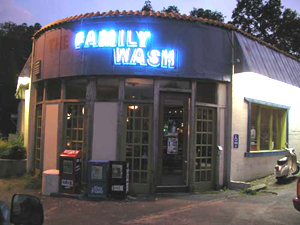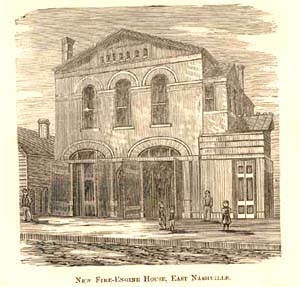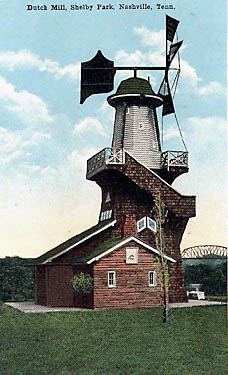 Have you ever noticed that the east side of a city is usually where the artists, weirdos, and progressive folk like to hang out? A fellowEast Nashvillian pointed this out to me the other day while enjoyinga pintof Guinness at the Family Wash.Hmm, maybe there is something to that. East village New York, five points in Atlanta… well, I don’t know about many other places, but I’ll take this guy’s word for it.
Have you ever noticed that the east side of a city is usually where the artists, weirdos, and progressive folk like to hang out? A fellowEast Nashvillian pointed this out to me the other day while enjoyinga pintof Guinness at the Family Wash.Hmm, maybe there is something to that. East village New York, five points in Atlanta… well, I don’t know about many other places, but I’ll take this guy’s word for it.
Since we moved to East Nashville my wife and I have been adapting to a rapidly changing insular area that likes to think of it self as “The Island.” However, East Nashville has an interesting history all her own.
 East End began in 1876 as an addition or outgrowth of the fashionable Edgefield community. It was originally called the East Edgefield addition, but became known as East End because it was located on the eastern edge of the city limits. By the turn of the century, East End’s population was in the hundreds. Families bought or built homes which showcased the Victorian love of craftsmanship, intricate design and numerous decorative elements.
East End began in 1876 as an addition or outgrowth of the fashionable Edgefield community. It was originally called the East Edgefield addition, but became known as East End because it was located on the eastern edge of the city limits. By the turn of the century, East End’s population was in the hundreds. Families bought or built homes which showcased the Victorian love of craftsmanship, intricate design and numerous decorative elements.
During the early 20th century, the East End neighborhood evolved into a stable, picturesque, and conveniently located inner city neighborhood. East End is typical of inner city neighborhoods, a well-preserved neighborhood with a high degree of visual integrity.
You can find out more about East End at http://www.eastendnashville.org
The Cable Streetcars Of Early East Nashville
In the early 20th century, Nashville was home to a network of electric cable street cars that gave suburbanites convenient access to the thriving business center of downtown Nashville. These streetcars were owned by Percy Warner, of the famous Nashville industrialist family. Percy Warner followed the lead of his father, James C. Warner, in the New South exploitation of natural resources with his Warner Iron Corporation in the 1870s and 1880s. The younger Warner developed an interest in the new areas of electric utilities and urban mass transportation. From 1903 to 1914 he presided over the Nashville Railway and Light Company, controlling all the city’s streetcars.
At the time, East Nashville was relatively underdeveloped, but gained the advantage of street car access because Percy Warner’s farm and mansion was located on the edge of the city limits on Gallatin road where the NADC college is currently located. Residents of the East Nashville area had a direct line to downtown via this trolley system, which in turn led to the growth of the area.
The most authoritative original source I have found on East Nashville was a 1970 handwritten history by Harry V. L. Gower, who lived in Lockeland Springs and died in 1977 at the age of 87.
According to Gower, “tranportation to east Nashville was furnished by the Nashville Street Railway. The Fatherland line came out Fatherland to 11th St. on 11th to Shelby Ave. and switched between 12th and 13th Streets where the regular cars stopped. A “Dawson Dinky” – so named for the long time motorman – ran from the switch to the end of Shelby Ave. at the entrance of Shelby Park. The Fatherland line had a 10 minute schedule. The dinky met every other street car.”
Gower further explains, “the Woodland car line stopped between 14th and 15th Streets. It was later extended to 16th Street where the R. D. S. Robertson’s Military Academy was located. As the population grew, the line was extended out 16th to Eastland and out Eastland to porter Road. Later it was extended out Porter Road to Greenwood Ave.”
Early Lockeland Springs
Lockeland was named in 1880 when the subdivision was first being developed. The name comes from the Weakley family who originally built their homestead north east of the original Fort Nashborough, and the tract of land passed through various family descendents over the years. Jane Locke was the wife of Col. John Weakley. His homestead called Lockeland was built in 1790 – 10 years after Ft. Nashborough was founded – Weakley may have constructed the brick structure with an old log house as a part of the project. The more recent portion with an entrance to the north and the tower, facing west toward Woodland Street, was added long after the property had passed out of the ownership of the Weakley family.
According to Gower, “At noon on Saturday, September 1, 1906 Lockeland was taken into the city. Then came gas mains. Later on streets were opened through the pasture, Holly being the first one. Then came water mains and electric lights. The dustry roads were made into streets, 16th and 17th streets were the only two through streets northward. ”
Shelby Park
 In the 1890’s, the Nashville Railway built a casino in Shelby park that later became a community center. There were plays performed here, as well as paddleboats for rent, a large dutch windmill, and a large lodge called sycamore lodge. In 1906 the city of Nashville took over Shelby Park. A basin was dug for a lake. The dirt was used in building roads through the park. Today, Shelby park remains, and Shelby Bottoms is the largest green preserve in the the Nashville metro area, and possibly the best place for bikers and runners.
In the 1890’s, the Nashville Railway built a casino in Shelby park that later became a community center. There were plays performed here, as well as paddleboats for rent, a large dutch windmill, and a large lodge called sycamore lodge. In 1906 the city of Nashville took over Shelby Park. A basin was dug for a lake. The dirt was used in building roads through the park. Today, Shelby park remains, and Shelby Bottoms is the largest green preserve in the the Nashville metro area, and possibly the best place for bikers and runners.
Tank Arnold
I’ve lived in East Nashville since 2001. While I do agree with most of what you post, I do take issue with the “liberal” label. In addition to the artists, musicians and hippies living in the “hood” are lawyers, doctors, business owners and people who are, well, “conservative”. And these type of people don’t mind mixing and having a face to face conversation with the bohemians and gays. You make it seem as if anyone who does not wear the liberal badge is only concerned with wearing fabulous clothes, hanging with people who are physically attractive and rich, and only looking to hook up with brainless hotties. I live in East Nashville because I like the immense diversity of the neighborhood in all it’s aspects… liberal and conservative differences included.